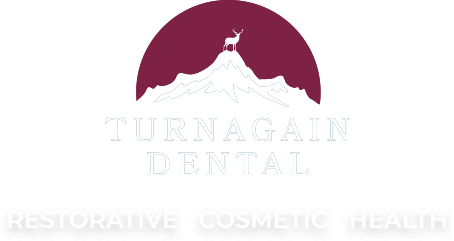 In spite of our best efforts, sometimes dental emergencies happen. When they do happen, they can be worrisome. There can also be a question of what exactly constitutes a dental emergency. People are not always sure if they should wait to see the dentist during normal business hours, or if they should call immediately, regardless of the time of day. Let’s talk about examples of dental emergencies, and if you should wait to see the dentist—or if you should do an online search of the term emergency dentist Anchorage, AK.
In spite of our best efforts, sometimes dental emergencies happen. When they do happen, they can be worrisome. There can also be a question of what exactly constitutes a dental emergency. People are not always sure if they should wait to see the dentist during normal business hours, or if they should call immediately, regardless of the time of day. Let’s talk about examples of dental emergencies, and if you should wait to see the dentist—or if you should do an online search of the term emergency dentist Anchorage, AK.
Dental Emergency FAQ
What constitutes a dental emergency?
A dental emergency is any dental issue that needs to be addressed right away.
Examples of dental emergencies.
Virtually any dental pain that the patient is preoccupied with can be defined as a dental emergency. A broken tooth, infected gums, or extreme sensitivity to hot or cold temperatures could qualify as an emergency.
What should you do if your tooth is knocked out?
Pick up the tooth and carefully rinse off any debris. Try to avoid touching the root of the tooth if possible. If you can, reinsert the tooth into the socket. Hold the tooth in place by closing your jaw and lightly biting on that tooth area to keep it positioned, or holding the tooth in place with a finger.
If you are unable to reinsert the tooth, place it into a glass of milk. This will help keep the tooth moist. DON’T submerge the tooth in regular tap water, the tooth will become damaged if exposed for long periods of time to the chemicals present in tap water.
Visit an endodontist as soon as possible.
What should you do if you have an abscess?
An abscess is a bacterial infection. Symptoms include redness, pain, sensitivity to hot and cold temperatures, swelling, and pus. The swelling and discoloration will be present at the root of the tooth, above the gum line.
An abscess has the potential to be life threatening, as the infection could continue to spread from the tooth throughout your body, so contact your dentist right away.
What DOESN’T constitute a dental emergency?
A chipped tooth, noticeable cavity, or a dull toothache is not an emergency. These minor dental issues can wait for a dental appointment.
Is Your Dental Situation Urgent?
Some dental emergencies cannot wait for treatment; some emergencies might not be urgent, so you can wait to see your dentist. It’s important to know the difference when it comes to seeking treatment. Here are few examples of emergency situations that would likely be classified as urgent:
- Swelling that is very painful
- Bleeding that won’t stop
- A toothache that hurts unbearably
- A permanent tooth that becomes loose or that is completely knocked out
- An injury to the jaw
If you have any of the above situations occur, it is best to call your dentist immediately to deal with the situation right away.
Here is a list of some situations that would not be considered an urgent dental emergency:
- A cracked bridge or crown
- A broken retainer or night guard
- A lost crown or filling
- A mild toothache
- Food stuck between teeth
If you have a nonemergency situation, you should still call your dentist and make an appointment to be seen as soon as possible. But if it is after hours or the weekend, you are probably just fine waiting until the next available appointment.
Preventing Dental Emergencies
When you’ve had one dental emergency, you will probably vow to do whatever it takes to avoid having more emergencies in the future. When it comes to dentistry, prevention is key—and that is the case with emergencies as well. Those who visit their dentist regularly are less likely to have an unexpected emergency happen than those who don’t.
Call Us for Your Next Appointment
Stay on top of your oral health and do what you can to prevent dental emergencies from happening. Contact our Anchorage dental office if you think you’re having a dental emergency.
